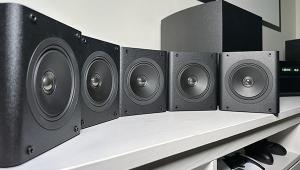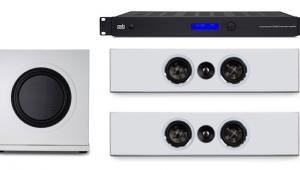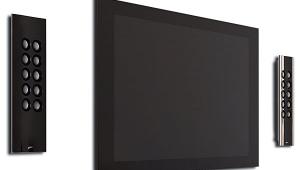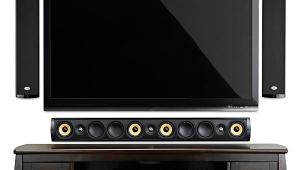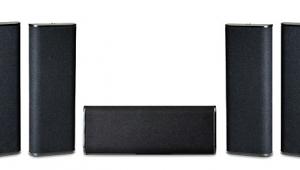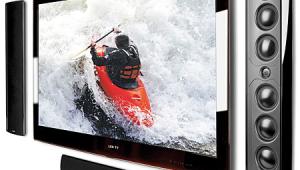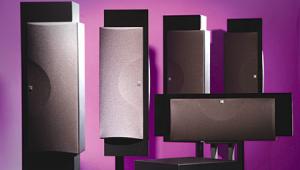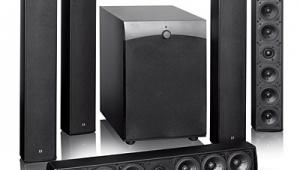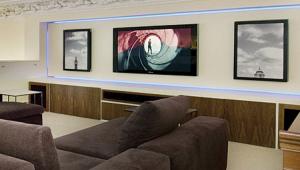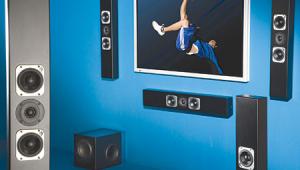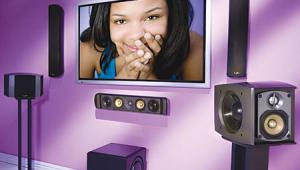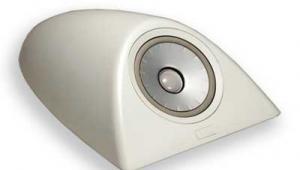Review: SpeakerCraft OE5 One outdoor speaker
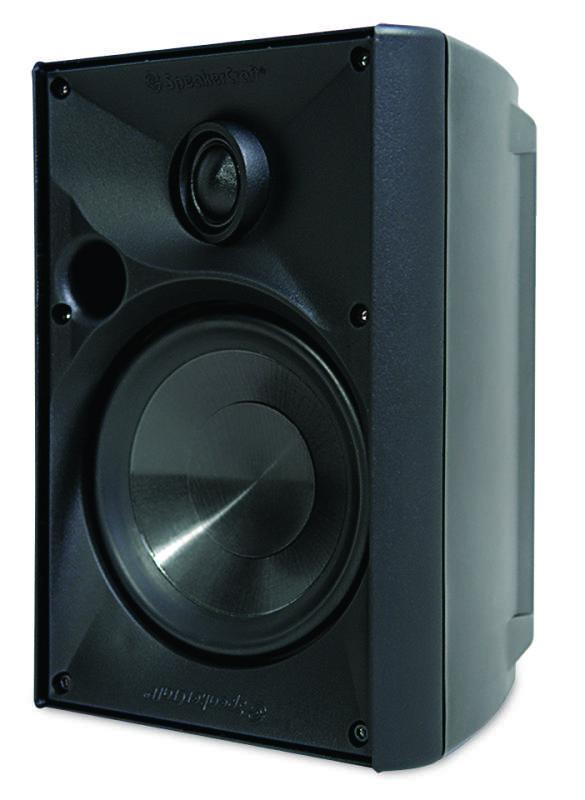
Most outdoor speakers share pretty much the same design. But the OE5 One, like Speakercraft’s other Outdoor Elements speakers, has a feature found in only a few outdoor models: a ported enclosure. The port allows for deeper bass response than a sealed cabinetdoes.
Why don’t other manufacturers use ports? Because it’s hard to design the port so that water, dust, and bugs can’t enter. In the OE5 One, Speakercraft uses three techniques to keep water out. First, the port curves upward, so the water has to work against gravity to get in. Second, the port terminates in a fine mesh screen, so anything that does work its way up there is further impeded. Third, of course, there’s the front grille, which will greatly slow down any incoming water flow. It seems to me you’d have to blast a hose right at the mouth of the port to get water into the OE5 One’s enclosure — something I can’t say about the Klipsch AW-525, which has a ported enclosure but lacks the OE5 One’s safeguards.
At 9.25 inches high, the OE5 One is the most compact design tested here. The 5.25-inch woofer’s cone is made from injection-molded graphite— a material that, as I understand it, is a graphite-impregnated polymer that can be molded into particular shapes. A tap on the cone showed that the material is light but very stiff, somewhat like aluminum. The 1-inch tweeter’s dome is made from treated silk. The tweeter does pivot slightly, a feature touted as allowing you to direct the sound at your favorite listening position, but it tilts only a few degrees in any direction, not enough to make a noticeable difference.
When I removed the front baffle to see what was inside, I found a fairly simple crossover with a resistor, a capacitor, and two chokes — probably a 12 dB/octave electrical filter on the tweeter and 6 dB/octave on the woofer.
Performance
Overall, the panelists thought the OE5 One’s tonal balance — the relative levels of bass, midrange, and treble — was about right for an outdoor speaker. However, they were troubled by unevenness in the frequency response. I suspect this was caused in part by the relatively shallow crossover slope on the woofer. My notes cited a “cupped hands” coloration in voices, which results from the directionality of the woofer at high frequencies; such frequencies would be filtered out of the woofer with a steeper crossover slope or a lower crossover point. I think some of what the panelists were hearing might have also been due to a too-resonant enclosure; the OE5 One didn’t sound as “dead” as the other speakers when I rapped a knuckle on its side.
The Verdict
While the OE5 One has some interesting design twists, we think it needs a little more tuning to deliver what we’d consider to be satisfying outdoor sound.
Test Bench
Frequency response of the OE5 One measures 76 Hz to 20 kHz ±8.3 dB on-axis, ±10.9 dB avg 0°-30°. Measured impedance is 4.1? minimum, 8? average. Sensitivity from 300 Hz to 10 kHz averages 83.9 dB.
- Log in or register to post comments
